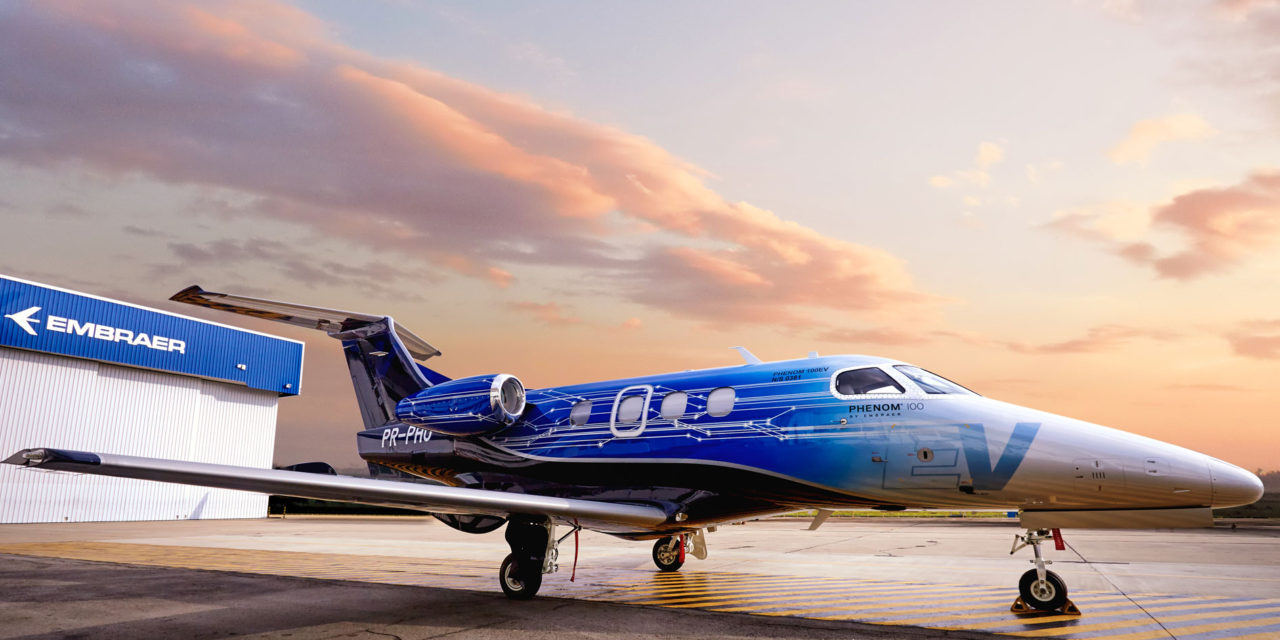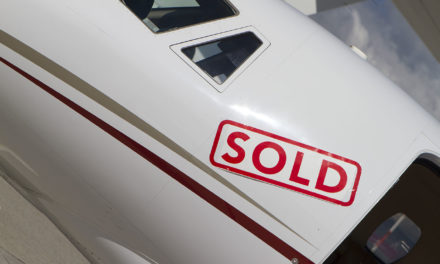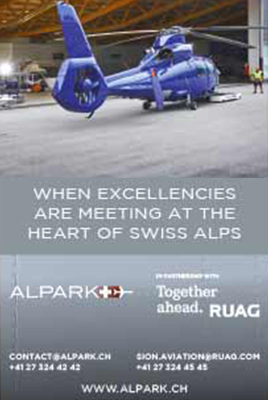In early 2006, the Phenom100 was slated as one of the upcoming Very Light Jet (VLJ) programs that would take the market by storm. Full of promise, at the time, the aircraft was expected to convert numerous turboprop owners to purchase jets. Ten years later, the gamble has nearly paid off for the Brazilian aircraft manufacturer. As proof, Embraer unveiled the Phenom 100EV in 2016. We take the ultimate version of the twinjet that forged Embraer’s reputation in the business aviation market out for a test run.
I remember my first time at Embraer’s Sao Jose dos Campos factory in 2008. The factory was busy testing what would become the now classic entry-level business jet. The Phenom100 was the outcome of an ambitious program based on a single-pilot concept associated with a comfortable twin-jet engine featuring a cockpit with the latest technology including the Prodigy flight deck developed in collaboration with Garmin. The Phenom 100 also featured good handling qualities, nice range of 1180Nm with a maximum cruise speed of Mach .70 and relatively low operating costs (advertised at around $600 to $1,000 per flying hour considering the fuel price at the time).
Performance review
Over the following years, the first born of the Phenom family would become a success story with more than 340 jets sold. Its clients included private operators, air charter or air taxi companies and especially flying schools to train air crews like Etihad. After 8 years and listening to their customers’ advice, Embraer decided to proceed with an evolution of the classic 100 adding some new features to the key elements that contributed to the twinjet’s success. A radically different view to that of its main competitor Cessna which announced the end of production of its Citation Mustang to focus on the M2. The idea was to improve performance in terms of high speed cruise, range and in hot and humid conditions from high elevation airfields such as Toluca or Denver. In order to increase performance, Embraer worked closely with Pratt&Whitney to improve the PW617F-E engine. Some changes made in the software resulted in a 10% thrust increase on the high speed cruise from 389kt to 406kt at FL330. The time to climb to FL410 was reduced to 25 min versus 33 min on the original 100. Maximum Take Off Weight was boosted from 10582lbs to 10703lbs. Hot and high takeoff distance was improved by 15% increased thrust and a significant reduction in takeoff distance was also achieved in hot and humid conditions from high elevation airfields. In addition to performance and to improve the pilot interface, Embraer in partnership with Garmin upgraded the original avionics suite from the Prodigy 100 flight deck to the Prodigy Touch flight deck (G3000). Like the cockpit, the cabin also underwent some adjustments and upgrades. The EV version integrates the use of new materials, new connectivity as well as LED cabin lighting. Embraer has not only managed to upgrade its decade-old aircraft, but it has also managed to better cater to its market. Initially manufactured in Sao José Dos Campos, the Phenom 100 and its current EV version have been built since 2015 at its production facility in Melbourne, Florida.
Startup
Following this presentation, my pilot for this flight, Captain Salgado and I take some time to discuss the selected flight plan over a good Brazilian espresso. Our Phenom100 EV registered as PP-XOM is the current test aircraft for the EV program. It is equipped with various test installations in the cabin which replace the passenger seats. From the outside, it is hard to spot any difference with the legacy Phenom100. Thinking back 8 years ago to my original flight and the look of the aircraft as well as the amenities that it brought to that segment such as a good size luggage hold, LED lighting, electric brakes, great stairs, which were innovative at the time and are still up to date. Nothing appears to have changed in this respect. We climb on board and the cabin though crowded with test equipment still looks spacious enough and allows passengers to fully stand, an important factor for a jet this size. I take a seat in the cockpit and happily discover the Phenom flight deck with a few changes. And what changes! The three high-resolution displays are much larger than the previous versions and now take up the main space. Each pilot has their own Garmin Touchscreen Controller (GTC) as a primary interface with the system. The rest of the cockpit looks very state-of-the-art with a lot less knobs and switches. On the whole, I have before my eyes a stunning glass cockpit! Before becoming fully hypnotized, my pilot briefs me on this new avionics system and shows me how easy it is to use the GTC interface. The two 5.7’’ touchscreen controllers are the general interface with all the systems and accessed through drop-down menus. The screens are used to manage changes in frequencies, navigation functions, transponder operations, the EGPWS, the TCAS, display electronic checklists, search for failures, display the aircraft main synoptics as well as the various screens. Overall, these two screens let you to do everything. The three 14.1’’ high-resolution screens allow the pilots to select the information to be displayed with their split screen capability. The quantity of information displayed is impressive. And yet, using the Garmin 3000 is so intuitive that you can quickly and easily find what you are looking for on the system. Captain Salgado then showed me the advances provided by the system especially in terms of keeping the pilots better informed on flights elements as well as exterior elements. He showed me the new features such as the Surface Watch System, which with a land surface database offers very effective protection against ground collision. In addition, there is the latest version of the Terrain Collision Avoidance System (TCAS), the new Vertical Navigation system (Climb, Cruise and Descent) as well as the new weather radar with cell contour display and its Reactive Windshear Alerting system for rapid reaction to potentially hazardous phenomena. After a few minutes playing with the system, we are ready for startup with a flight plan inserted in the GTCs as well as takeoff parameters and speeds easily computed by the system. Startup is, just like on the original, incredibly simple, and we are ready to taxi in a matter of minutes.
Timely ascent
Today we will take off from a 5000m long runway (elevation is 2000ft MSL) with the temperature at 28°C (ISA+10), and with two pilots, an engineer, a full tank (1200kg) of fuel we will weigh 5100kg. The seat feels just as comfortable and offers a nice position in this spacious cockpit with its large windows providing a wide view of the exterior. Just like the original, the use of the rudder to steer the aircraft is simple and the brakes are efficient. The pilot feels comfortable in this streamlined and ergonomically-designed cockpit. While waiting to be cleared for takeoff, Salgado reviews the Take Off configuration switch in the event that our configuration does not match the one determined in the FMS (Flight Management System). For example, audio and visual warnings are activated on the screens of both pilots and in the cockpit in the event the flaps are not deployed prior to take off. Done with our take-off electronic checklist, we are cleared for takeoff, we line up and I release the brakes setting full power with a V1 speed of 111kt, a VR rotation speed of 113 and a V2 takeoff security speed of 130kt. The acceleration is truly felt and we rapidly clear 15ft in a matter of around 800m with a good 15° of pitch thanks to that 15% increase in takeoff thrust. I pilot the aircraft in order to get a feel for the controls especially during the acceleration and raise the landing gear. The controls are smooth and precise and just a touch of pitch trim is needed to balance the control column. We are cleared for a continuous climb to FL410, the ceiling of our Phenom and I use the autopilot at around 6000ft to climb initially in a Vnav mode. Accelerating to 200kt for a max rate climb at continuous/climb power passing through FL100 gives us a good 2200fpm rate of climb slowly regressing to 1800fpm passing FL200 with 220kt indicated. At Mach .55, our rate of climb drops to 1000fpm around FL250 then to 850fpm passing FL300 down to 700fpm around FL380 all the way to FL410. We reach our maximum ceiling after 29 minutes (ISA+10) being fairly close to the test number (25 min) and having consumed 290kg.
In flight
Accelerating at CON/CLB power to .65M which is our max cruise speed, we read 369kt of true airspeed with a fuel flow of 2X140kg per hour. Turns and evolutions on autopilot at this flight level are smooth using a half bank (12°angle of bank). I disconnect the autopilot and try out some gentle 30° angle of bank turns without the YawDamper system on with no sign of sideslip or any other oscillation. Going to 45° angle of bank bleeds our speed down to .61M and we can feel just a mild oscillating movement that dampens itself down after 3 oscillations. I select the auto-pilot then accelerate to .70M our maximum operating limit Mach (MMO) descending with a vertical speed mode (V/S). Upon reaching the number an audio warning sounds and with auto-pilot on a pitch up momentum is initiated by the system to prevent us from accelerating any further.
Descending to FL330 and decelerating to .61M, I again select CON/CLB power on the thrust lever to accelerate to our maximum cruise speed to .65M. At ISA+10 it takes a few minutes for the 96.3% of N1 on both our engines to get us there. Our true airspeed is then 392kt with a fuel flow of 2X190kg/h. The EV performance has clearly been upgraded from the original Phenom 100!
We now descend towards FL150 with idle power and our speed brakes out with a rate of 4000fpm to check out some handling qualities. I fly manually some 45° AOB turns at first then progresses to 60°AOB. We sustain 2Gs and some pitch trim is now necessary to keep our nose on the horizon and stay at flight level. With the auto-pilot disconnected I now slow us down toward our stall speed with flaps and gear up.
We get below 113kt which is our minimum clean speed in that configuration and at 96kt the audio warning starts saying “Stall-Stall”, then at 87kt, the “stick pusher” system forces a pitch down momentum causing an immediate recovery. Getting our gear and flaps down we get the audio warning at 86kt this time and the stick-pusher forces us to decrease our angle of attack at 77kt! Happy with the handling capacities as well as the flight protections of the Phenom 100EV we request to head back to Gaviao for some approaches.
On the way back, Captain Salgado shows me the new features supported by our GWX70 radar which is available as an option in the Embraer catalog. We are now able to precisely visualize the cloud cells with the suppression of ground clutter; the turbulence detection function also gives a precise and colorful picture of precipitation and turbulence ahead of our path. We receive the latest ATIS information and I insert a RNAV 02 approach in our FMS using my GTC.
Soft approach
I start a VNAV descent towards 2500ft and we quickly discuss the approach itself and the way to fly it in LNAV/VNAV modes.
The control requests us to hold and I reduce us to 160kt while in two clicks Salgado activates a standard holding pattern over that fix using his GTC. This allows us to use auto pilot and focus on the upcoming approach and potential threats. We discuss the new features of the Garmin 3000 suite while holding: caution and warning alerts are provided (both visual and audio) when a windshear condition is detected. The optional Surface Watch system uses different functions to give us runway and taxiway information updated as we move while taxiing or flying, as well as visual and audio warnings to avoid potential runway incursions.
We are now cleared for the approach and, while slowing down to 125kt (max clean speed) then to 105kt with gear and flaps fully down, our 100EV’s auto-pilot flies a beautiful Rnav approach for runway 02. To demonstrate the TAWS feature, Salgado tells me to disconnect the auto-pilot and to increase our rate of descent to over 1500fpm.
I aim for the stopway before runway 02, the TAWS first warns us with the audio warning “Terrain-Terrain” then while I continue downhill, the audio warning “Pull up-Pull up” is activated and I go around with full power and 15° of pitch while my pilot retracts our flaps to the next upper position. We accelerate and clean up at 1500ft and we are almost immediately at 3500ft. I set us up for a classic visual pattern with gear and flaps down. After this strong acceleration, I fly manually another pattern and we are quickly back on track for our final descent to runway 2. Our final approach with some cross wind is straight forward and a pleasure to fly as for the landing. We are back on the ground in a matter of minutes and I keep some speed on the jet without tapping the brakes until the audio warning “2000ft remaining” reminds us of the distance available ahead.
Taxiing back to the factory apron as well as engine shutdown are both uneventful. Our flight that I thoroughly enjoyed lasted 1h52 min for a 775kg of fuel burn… I think to myself how I should have flown that third pattern to stay aloft a little longer!
Our Phenom 100 EV retains the same interesting features and flying qualities as the original 100 and brings some game changing capacities to that segment: a significant increase in power especially in hot and high environment with the upgraded engines, a very intuitive new avionics suite upgrading situational awareness for the pilot and some more innovations for a price tag of $4,495 million versus $4,162 million for the original 100. With its Phenom 100EV, there is no doubt that the success story will continue for the Phenom 100 after having celebrated its one million flight hours in July.
By Greg Cellier
© photos : Greg Cellier & Embraer









